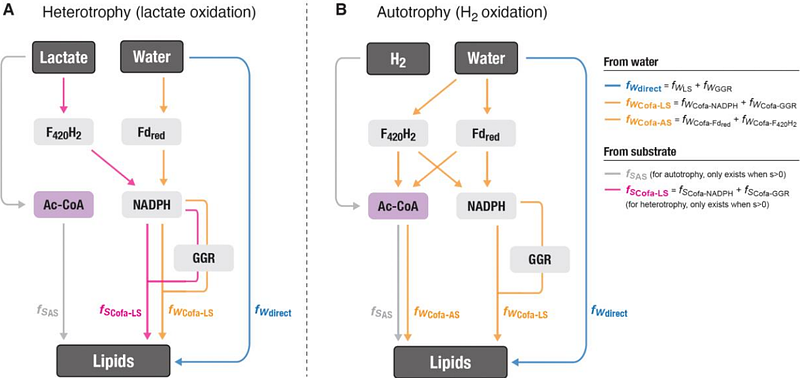The hydrogen isotope signatures of autotrophy versus heterotrophy recorded in archaeal tetraether lipids

The hydrogen isotope signatures of autotrophy versus heterotrophy recorded in archaeal tetraether lipids
Rhim, J. H.; Kopf, S.; McFarlin, J.; Batther, H.; Harris, C. M.; Zhou, A.; Feng, X.; Weber, Y.; Hoeft-McCann, S.; Pearson, A.; Leavitt, W. D.
AbstractThe stable hydrogen isotope composition of archaeal lipids is emerging as a potential paleoenvironmental proxy, adding to the well-established application of plant leaf wax-derived n-alkanes in paleohydrological reconstruction. A handful of studies reported relatively invariant and depleted hydrogen isotope compositions for archaeal lipids despite the range of different organisms and growth conditions explored. However, how modes of metabolism affect the hydrogen isotope signatures of archaeal lipids remains poorly understood, limiting our ability to interpret archaeal lipid biomarker records from the environment. Here we conducted water isotope label experiments with a metabolically flexible and well-studied model archaeon Archaeoglobus fulgidus and quantified the hydrogen isotope fractionation between lipids and water in response to different carbon substrates and electron donor-acceptor pairs. The 2H/1H fractionation between lipids and water ({epsilon}L/W) was overall negative, ranging from -280 to -226 {per thousand}, and overlapped with the ranges observed for other archaea in previous studies. Isotope flux-balance model results suggest that [≥]80 % and [≥]50 % of lipid-bound H in A. fulgidus cultures originate from water during autotrophy and heterotrophy, respectively. The model results also suggest the final saturation during isoprenoid lipid biosynthesis catalyzed by a flavoenzyme geranylgeranyl reductase (GGR) likely contributes to the large 2H/1H fractionation observed in this study, consistent with isotope flux-balance model results for a different archaeon. Finally, we synthesized available data to compare {epsilon}L/W patterns across all three domains of life: Bacteria, Archaea and Eukarya. Emerging patterns between archaeal and eukaryotic lipids are consistent with the notion of highly fractionating GGR, and the patterns between archaeal and bacterial lipids suggest that the general state of energy limitation may also contribute to depleted {epsilon}L/W observed in prokaryotic lipids. Altogether, these findings lend further support for the potential of archaeal lipid {epsilon}L/W as a paleohydrological proxy and provide a broader insight into the 2H/1H fractionation mechanisms potentially shared among prokaryotic and eukaryotic lipid biomarkers.